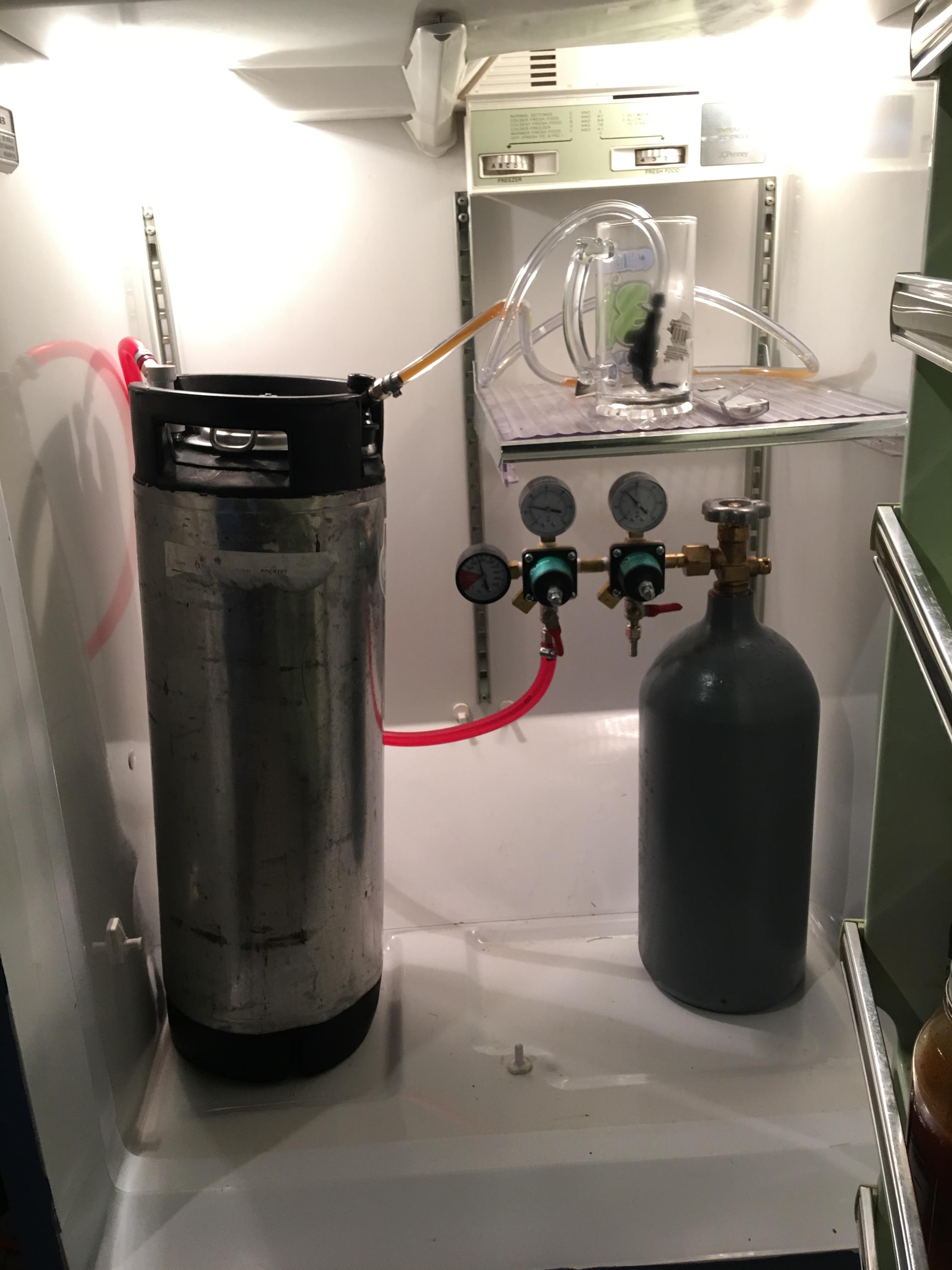So you're actually FC'ing and THEN bottling?! I guessed that would explode in the bottle. My suspicion from that is most growlers don't have the same level of "seal power" as capping a bottle. Therefore, you can get away with it and not worry about the container exploding.
Here's what happens: when you force carb, the headspace of the keg is at whatever pressure you use (in my case 30psi). The beer itself will absorb that pressure slowly. If you left the keg at 30psi for, say, a week or more, THEN the beer would be carbed to 30psi, which would be....problematic. It takes time for the CO2 to dissolve into the beer.
But I'm only force carbing it long enough to get the BEER (not the headspace, the beer) to about 10-12psi. That's why I stop after 24 hours. Sometimes it's a bit shy of where I want it, and if so I'll either leave it at serving pressure until it catches up--so I don't have to remember to take it off 30psi

--or if I'm in a hurry, give it another 4 hours at 30psi.
The beer ends up at 10-12psi, which is where I want it--and which will bottle just fine.
There's a chart somewhere showing how long it takes to carb up at varying pressures and temperatures. It's a function of pressure, temperature of the beer, and surface area of the beer exposed to the gas.
I'm kind of smiling here because I remember having exactly these kinds of questions.
***************
BTW, just to help further the understanding: you can force carb in a heckuva hurry if you attach the keg to the gas, and then rock it back and forth on your lap. Sloshing the beer inside the keg greatly increases its surface area between the headspace plus CO2 bubbles. You can actually hear the regulator groan as it keeps supplying gas, and can hear the gas bubbling from the IN dip tube. Someday I'll try to quantify just how fast and how much to do this, but for now, 30psi for 24 hours is about right for me.







